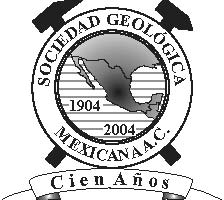|
BOLETÍN DE LA SOCIEDAD GEOLÓGICA MEXICANA VOl. 59, NÚM:. 1, 2007, p. 9-18 http://dx.doi.org/10.18268/BSGM2007v59n1a2 |
 |
Las gemas de México
Juan Carlos Cruz-Ocampo1, Carles Canet2.', Darío Peña-García1
1 Facultad de Ingenieria, Universidad Nacional Autónoma de México, Ciudad Universitaria, Delegación Coyoacán, 04510 México D.F.
2 Instituto de Geofísica, Universidad Nacional Autónoma de México, Ciudad Universitaria, Delegación Coyoacán, 04510 México D.F.
* This email address is being protected from spambots. You need JavaScript enabled to view it.
Abstract
Several minerallocalities in Mexico are well known for being sources of fine gems and mineral specimens. In Mexico, numerous minerals and rocks have been profited as ornamental commodities at some time in History, as jade, turquoise, amazonite, serpentinite, Mexican onyx (travertine), cinnabar, malachite, obsidian, micas and amber. The importance of ornamental minerals for Mesoamerican civilizations is evidenced by a wide terminology in the Nahuatl language specifically referred to them. In addition, abundant decorative and ceremonial pieces made with ornamental minerals have been found in most archaeological sites in the country.
Five of the most valued and emblematic minerals that achieve the qualities of a gemstone in Mexico are fire opal, amber, topaz, fIuorapatite and danburite. Among them, only amber and opal are regularly mined as gemstones at present, and topaz is only occasionally mined. On the other hand, danburite and fluorapatite are gangue minerals of presently mined ore deposits, but they are commercialized on a small scale due to their high esteem by mineral collectors.
Keywords: gemstones, lapidary, opal, amber, fluorapatite, topaz, danburite, Mexico.

